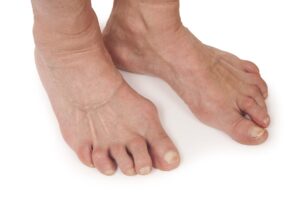
Hip Dysplasia: A Guide for Parents and Adults
Hip dysplasia (developmental dysplasia of the hip – DDH) is a condition that affects the hip joint.

Do you suffer from heel pain as a runner or someone who is standing all day? Or maybe you have this pain no matter what you’re doing? Once this pain arises, you might google your symptoms to see what can help. You will find a website that will tell you to ice your heel, show you how to do calf stretches and how to roll a ball on the bottom of your foot. Your pain might go away for a bit but then it comes back one or two weeks later. Now you’re confused and frustrated! So why does this keep happening?
Did you know that if you google ‘heel pain’? The first links that comes up are about how to treat plantar fasciitis? Without a diagnosis! You might have plantar fasciitis, but it is not as common to get as what we think.
Our foot is made up of 33 joints, 26 bones and more than 20 muscles and the plantar fascia makes up only one of these components. Our heel alone is made up of a large fat pad, various nerves and muscle fibres as well as a plantar fascia, which all have an influence on heel pain. So one mistake we often make when treating plantar fasciitis, is thinking it is plantar fasciitis in the first place!
What can we do about this? Often when I see patients with heel pain, I will establish the importance of coming up with a clear diagnosis before proper treatment. One of the most effective ways you can begin to do this before you see a health professional is to record a pain diary, just like the one in the table below:
| Morning | Middle of Day | Night | |
| Monday | 5/10 | 3/10 | 5/10 |
| Tuesday | 5/10 | 2/10 | 5/10 |
| Wednesday | |||
| Thursday | |||
| Friday | |||
| Saturday | |||
| Sunday |
This is done by recording the intensity of your pain from a scale of 0 to 10, with 0 being no pain at all and 10 being the most pain you’ve ever felt.
Heel pain comes up at different intensities at various times throughout the day, so I often tell patients to record how intense this pain is as soon as it comes up. Recording the frequency and intensity of pain in this way will help us determine patterns of heel pain, which can distinguish one condition from another.
Our feet can not be ignored. I tell patients that if we hurt our hand, we can simply stop using that hand until it feels better. It is much harder to do this with our feet! If you have constant issues with your heel, let the team at SOLE – LUTION PODIATRY help you. You can reach us on 02 9569 5145 or book online.

Hip dysplasia (developmental dysplasia of the hip – DDH) is a condition that affects the hip joint.

Heel pain can be a real drag, especially when that first step in the morning feels like stepping on a tack. One culprit behind this discomfort can be heel spurs. But what exactly are they, and more importantly, how can you fix them?

Arthritis in the feet can significantly disrupt your daily life, turning simple walks into painful struggles.